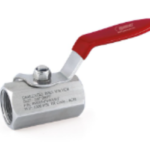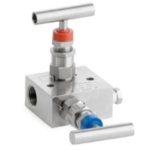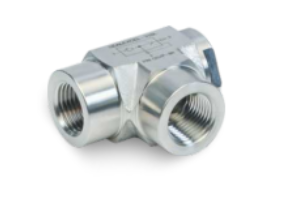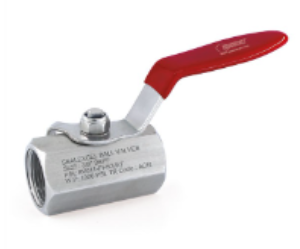
Pneumatic Pipe Fittings: Simplify Installation and Maximize Operations
March 6, 2024
Define Manifold Valves: Their Nature & Significance
April 19, 2024Have you ever felt like your machine is moving at the pace of a sloth on vacation? In the fast-paced world of automation and manufacturing, even a slight delay can throw a wrench (pun intended) in your production schedule. If you’re looking for ways to shave off precious seconds and boost your system’s efficiency, then look no further than the unsung hero of the pneumatic world: the Quick Exhaust Valve (QEV).
Think of a QEV as the pit crew for your pneumatic cylinders. Just like a pit crew helps race cars switch tires in record time, a QEV expedites the process of extending and retracting pneumatic actuators, significantly increasing your system’s cycle time. But how exactly does this little valve achieve such a feat?
Under the Hood of a Quick Exhaust Valve
Imagine a pneumatic cylinder, the workhorse of many automated systems. Compressed air pushes a piston inside the cylinder, extending or retracting a rod to perform a specific task. Now, when the air pressure needs to be released to retract the rod, it has to travel back through the original control valve. This return trip can be a bottleneck, slowing down the entire process.
Here’s where the QEV steps in. This nifty valve is installed directly on the cylinder, creating a dedicated exhaust path for the used air. When the control valve signals a retraction, the quick exhaust valve opens a larger passage, allowing the air to escape rapidly into the atmosphere instead of trickling back through the control valve. This drastically cuts cycle time, giving the impression that your system is on a diet designed to improve performance.
The Benefits of a Speedy System
So, why should you care about a faster cycle time? Here are some key benefits that QEVs bring to the table:
- Increased Production: By reducing cycle times, QEVs allow your machines to complete more cycles per minute, leading to a noticeable increase in overall production output.
- Enhanced Efficiency: Faster cycles translate to more work done in less time, optimizing your resource utilization and energy consumption.
- Improved Machine Life: Reduced cycle times also mean less wear and tear on your pneumatic components, extending their lifespan and reducing maintenance costs.
- Precision Control: Faster retraction allows for more precise positioning of your actuators, improving the overall accuracy and control of your system.
- Reduced Noise Levels: The rapid exhaust of air through the QEV can actually minimize the noise generated by the pneumatic system, creating a more pleasant working environment.
QEVs: Not a One-Size-Fits-All Solution
While QEVs are undoubtedly beneficial, it’s important to remember that they’re not a magic bullet. Here are some things to consider before integrating them into your system:
- Application Suitability: QEVs are most effective in systems that prioritize speed and require frequent retractions. They might not be as crucial for applications where slow, controlled movements are desired.
- Pressure and Flow Requirements: Ensure your QEV can handle the operating pressure and flow rate of your pneumatic system.
- Physical Space Constraints: QEVs come in various sizes, so make sure you have sufficient space for installation.
Choosing the Right Quick Exhaust Valve
With a variety of QEVs available, selecting the right one for your needs is essential. Here are some important things to think about:
- Valve Type: Choose between two-way or three-way valves depending on your specific exhaust needs.
- Flow Capacity: Select a valve with a flow capacity that exceeds the exhaust flow of your cylinder.
- Activation Method: QEVs can be activated electronically, mechanically, or by pilot pressure. Choose the activation method that best suits your control system.
- Material Compatibility: Ensure the QEV’s material is compatible with the type of air or gas used in your system.
Conclusion: Unleash the Potential of Your System
Quick exhaust valves are a simple yet powerful tool that can significantly boost your system’s performance. By understanding their function, benefits, and considerations, you can unlock the hidden potential of your pneumatic machinery. So, next time your system feels sluggish, consider incorporating QEVs and watch your production take off like a well-oiled machine on race day!




